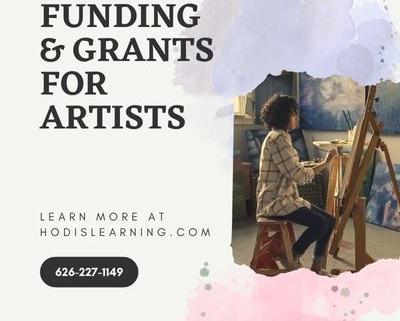Funding & Grants for Artists
Whether you’re a painter, sculptor, photographer, or multidisciplinary artist, securing funding and opportunities for artistic growth can be critical to advancing your career. Grants, residencies, and fellowships offer financial support, creative time, and valuable networking opportunities. But how do you find the right ones, and how can you stand out in a sea of applicants? We’ll walk you through the steps to finding and applying for art grants, residencies, and fellowships and share tips for writing compelling applications.
1. Finding the Right Opportunities
The first step is to discover the opportunities that match your artistic practice, career goals, and location. Here’s where to look:
Online Databases and Art Platforms
– Websites like Res Artis, TransArtists, and Alliance of Artists Communities are great for finding residencies.
– Platforms like Creative Capital, ArtDeadline.com, and NYFA Source list grants and fellowships.
– Local arts councils often offer grants to artists based in specific regions.
Networking and Social Media
– Follow artists, organizations, and curators on platforms like Instagram. Artists frequently share upcoming opportunities.
– Join online artist groups on Facebook or LinkedIn, where members often post residency or grant opportunities.
Newsletters and Mailing Lists
– Sign up for newsletters from arts organizations, galleries, and foundations. Many grants and residencies are announced directly through these channels.
2. Understanding the Types of Support
It’s important to know what you’re applying for and how it aligns with your current needs:
Art Grants
Grants are typically financial awards that don’t require repayment. They can cover costs like project development, exhibitions, or personal artist growth. Look for grants that focus on your medium, your geographic location, or your demographic (e.g., emerging artists, women, LGBTQ+).
Residencies
Residencies offer time and space to create art, often providing studios, housing, and stipends. They’re ideal if you’re seeking a period of uninterrupted work or want to immerse yourself in a new environment. Some residencies may require you to engage with the local community through workshops or exhibitions.
Fellowships
Fellowships are typically longer-term programs that provide financial support and mentorship. They’re often highly competitive and prestigious, helping to elevate your career. Fellowships may require a body of work to be completed during the program or have a research-based component.
3. Preparing Your Application
Once you’ve identified the right opportunities, it’s time to prepare your application. While each grant, residency, or fellowship will have specific guidelines, certain elements are almost always required.
Artist Statement
Your artist statement should clearly define your artistic practice, philosophy, and goals. Keep it concise—no more than 300 words. Tailor your statement to align with the values and mission of the grant or residency you’re applying to. This shows the selection committee that you’ve done your research and understand how your work fits into their vision.
Project Proposal for Grants
For grants, you’ll likely need to submit a proposal that outlines the project you plan to complete if awarded the funding. Be specific. Include details about the medium you’ll be working in, the themes you’ll explore, and how the grant will help you achieve your artistic goals. Ensure your proposal is realistic within the grant’s budget and timeline.
Portfolio of Work
Your portfolio is the heart of your application. Include a carefully curated selection of your best and most recent work—usually 8 to 15 pieces. Make sure each piece has a high-quality image and includes a brief description, including the medium, dimensions, and any relevant background information. Tailor the portfolio to the grant or residency focus, emphasizing the works most in line with their mission.
Letters of Recommendation for Fellowships
Some fellowships require letters of recommendation. Reach out to mentors, professors, or peers who are familiar with your work and can speak to your talent and potential. Provide them with plenty of notice and a summary of the fellowship, so they can tailor their letters accordingly.
4. Tips for Writing a Compelling Application
Start Early
Give yourself plenty of time to complete the application. Start well before the deadline to avoid last-minute stress and allow time for revision. A rushed application can result in small mistakes or unclear ideas.
Follow the Guidelines
Carefully read the application instructions. Failing to follow guidelines can disqualify you immediately, no matter how strong your application is. Pay attention to word counts, formatting requirements, and deadlines.
Be Authentic
Your application should reflect who you are as an artist. Don’t try to mold your work to fit the perceived expectations of the selection committee. Authenticity can set you apart from other applicants.
Tell a Story
When writing your project proposal or artist statement, think of it as storytelling. Explain not just what you’re doing, but *why* you’re doing it. What drives your art? What impact do you hope to have? A compelling narrative can make your application more memorable.
Demonstrate Impact
Especially for grants, it’s crucial to demonstrate the potential impact of your project. Explain how the funding will enable you to complete work that could have a wider cultural or community effect. If applicable, mention how you’ll share the results (e.g., through exhibitions, publications, or community engagement).
Finding and applying for art grants, residencies, and fellowships can be a game-changer for your career. While the process may seem daunting, taking the time to craft a thoughtful and compelling application can increase your chances of success.
Ready to Take Your Art to the Next Level?
Whether you’re applying for grants or just looking to sharpen your skills, having the right guidance can make all the difference. At Hodis Learning & Music, we offer personalized one-on-one art lessons tailored to your creative goals. From building a professional portfolio to refining your technique, we’re here to support you on your artistic journey. Call us or submit a form to begin music lessons today.



